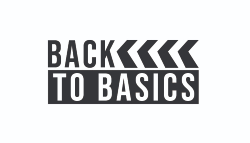Back to Basics: Innovation is More than Marketing
April 17, 2024
Blog

Welcome to GenericTechCompany! We’re pleased to unveil our newest product, the Generic 5! We’re super excited about the way it innovates the entire way that Generic works! If we had to sum up the Generic 5 in one word it would be: revolutionary!
Welcome to Back to Basics, a series where we’re going to be reviewing basic engineering concepts that may require a more complex explanation than a quick Google search could provide.
 We’ve all heard some variant of this spiel, and while the above may be more corny than usual for dramatic effect, the gist is the same: a company is releasing a new product that’s advertised as the Next Big Thing in Innovation. *The audience gasps in wonder.*
We’ve all heard some variant of this spiel, and while the above may be more corny than usual for dramatic effect, the gist is the same: a company is releasing a new product that’s advertised as the Next Big Thing in Innovation. *The audience gasps in wonder.*
For most of us, the word “innovate” is one we gloss over as another meaningless marketing term that holds little quantifiable value. Often when we hear the word, it’s applied to something that, in reality, does little to innovate.
This cheapening of the word innovation is problematic, because for members of the tech industry, the goal is to actually innovate.
You’re probably used to us getting into the nitty gritty of actual technology things, but this article will be a little different. We’re taking a step back to examine this idea of innovation in the tech industry, and what it means for you as innovators.
Innovating Innovation
Let’s start with a working definition: Innovation sees needs, creates a solution, and adds value. To break this down further, let’s start with the first idea in our definition: needs.
Every person, in their day-to-day life, performs countless tasks. As an egregiously simple example, when you wake up in the morning, you might get out of bed, turn on the light, and get dressed for the day.
In of themselves, you could look at these three simple actions as tasks, but each of them can be broken down further. How did the light get turned on? How did the person get out of bed? Where did they get their clothes from?
In all of these tasks, there are corresponding needs. Let’s isolate turning on the light. In order to turn on the light, the user needs to be able to see and recognize the switch, reach the switch, and move the switch.
Innovation sees these innumerable needs and asks two questions:
-
Are there any needs that are unmet?
-
How can they be solved?
Can we fix it? Yes we can!
This moves us to the second section of our working definition: solutions. To best understand solutions, let’s stay with the light switch task and find a need — what does the switch correspond to?
We’ve all experienced the situation where we have a row of identical light switches in front of us and no clue which one corresponds to what. To solve this problem, innovation has two options: use existing technology, or find a new way entirely.
An example of an existing technology solution would be to print labels for the light switches. This solves a need, but it does not use any new technology to do so. There is now no longer any doubt of which light switch corresponds to which device, and you didn’t even have to create a brand new piece of technology to do it.
Alternatively, let’s imagine you did create a new technology that could solve the same problem. Instead of using reading and words to give the user knowledge of light switches, your new device can simply beam the knowledge straight into their mind. When the user looks at the light switch, they instinctively know which one is which.
Ta-da, we’ve innovated! Right? The final requirement for innovation is that there is added value. This last requirement is often overlooked, and is why we get that eye-rolling response of disbelief when any new product is hailed as innovative.
While either of our light switch solutions are solving user needs, do they add enough value to warrant the time and effort? For most users, the answer is probably no. We have the ability to learn which switch is which, and as cool as it would be to have that knowledge beamed straight into our minds, the application of knowing which light switch is which is overkill.
Coming back to the tech world of today, when we look at the newest product in a series line, there are needs that are being met by new solutions, but often there is little value added for the user. When we think of historic innovations like the light bulb, they not only added value, but they added enough to make existing solutions like lanterns and candles obsolete.
When we look at the products coming out today and see a lack of innovation, there are opportunities for us. Firstly, we can more clearly see the few outliers who truly innovate, creating valuable solutions with their technological applications.
Secondly, there's space for us to create our own solutions. We live in a world with a billion user needs… let's make something new!
For more Back to Basics, click here!





